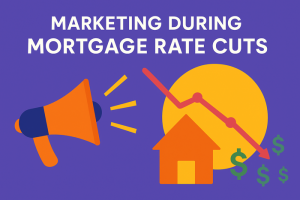Summary
This article discusses essential features that a mortgage website should have to improve lead generation, customer engagement, and overall business efficiency. It highlights tools and functions that can provide a seamless user experience for potential clients and enhance a mortgage business’s online presence. By the end, you’ll understand how to optimize your website to increase conversions and build trust with your audience.
Every year, more and more people begin their home financing search online. Though with the rapid ever-changing expansion of technology it’s not just enough to have a mortgage website. Your team or brokerage has to have a website with the features that potential borrowers have grown to expect and that will help navigate them through the borrowing process. With that in mind, today we want to take a look at six key mortgage website features that you have to have in today’s marketplace.
6 Must-Have Mortgage Website Features For 2021
While there are an endless number of features you can put into your mortgage website. There are a core group of features that are either considered necessary by today’s borrowers. Let’s take a look at each one of these features.
1. Team Directory

Buying a home is not only one of the most expensive transactions most people will embark on, but it’s also one of the most personal transactions they will embark on. As a result, giving people easy access to the people that work at your brokerage is imperative.
You can see a great example of this from The HLC Team.
Not only that, you want to ensure that your Team Directory also links your team members to personalized pages on your site for each team member. This will allow potential borrowers to get better insight into your team, everyone’s skills, and who they may wish to contact to discuss their home financing needs. It is also something that Google looks for when deciding where you website ranks on the search results. Google sees team directories as a sign that you are an official business and will rank you accordingly. Websites without this feature are graded by Google to be more “shady”, and lose rank score because of it.
2. Social Proof
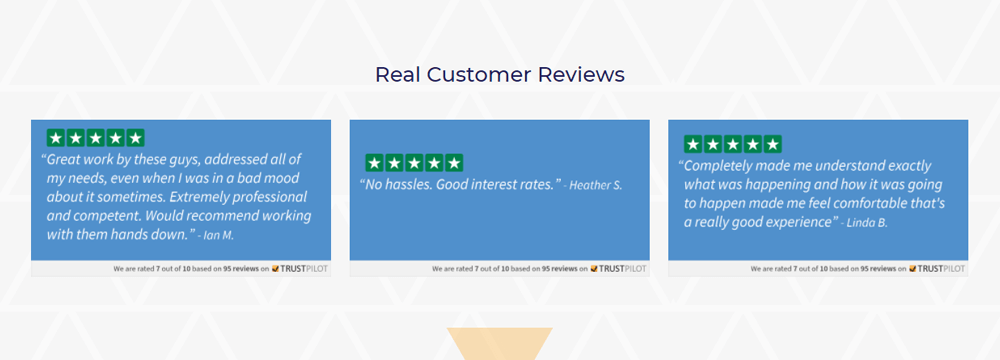
Social proof is a critical part of boosting conversion rates. Your site should be able to pull in online testimonials from all the online review sites your clients are posting to. Many website providers provide some sort of automated widgets that will make this easy.
One thing you want to be able to make sure you can do is also put review widgets on individual team member’s web pages. Again, you are using social proof to boost conversion rates. The more places you have social proof on your website the better off you are going to be.
Take a look at this example from AmeriHome Mortgage.
AmeriHome has teamed up with TrustPilot so they can easily embed verified third party reviews directly into their website, as seen here on their homepage. Using a plugin or widget such as this to pull in verified reviews is a fantastic way to not only increase conversion on your website, but also ensure that your reviews are updated automatically and frequently, eliminating the possibility of them becoming stale.
3. An Active Blog

A blog is not only critical to your content strategy and your overall SEO efforts, but also how you can position yourself or your brokerage as thought leaders in your industry. Potential borrowers are undoubtedly coming to your website with questions. The more content you can put into your site, the better. A blog is a fantastic place to put much of this content.
Any mortgage website platform worth it’s weight will have a blog as part of their offering.
Unlike the pages on your website that tend to host more evergreen content, your blog can be filled with timely content, videos, detailed explanations and anything else you can think of to promote your team or brokerage as the area experts in mortgage.
Check out this example from VAloans.com.
Undoubtedly when prospective borrowers visit their website, they have lots of questions and VALoans.com wants to establish themselves as the premier source of funding for VA loans. By embedding recent blog articles on their homepage they give prospective borrowers an easy place to find information and get the answers they need, increasing the likelihood that they will contact them to discuss their specific financing needs.
4. Lead Capture
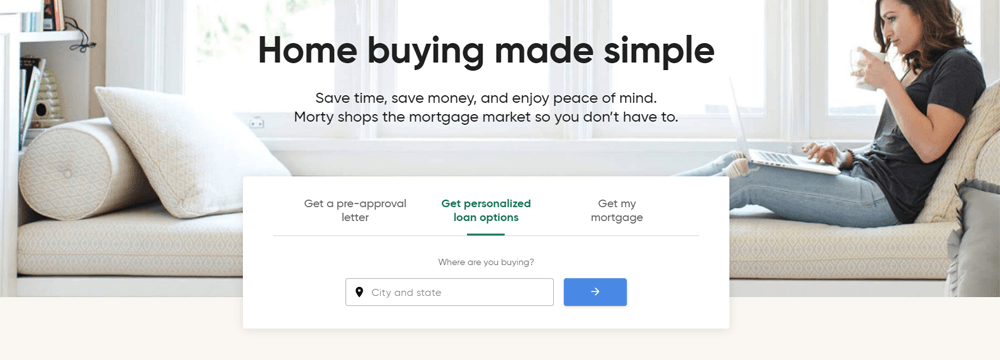
We’ve mentioned this many times, but it warrants mentioning again. Your website IS NOT simply an online brochure. You want your mortgage website to be a lead generation machine. To do this, you have to be able to capture leads on your site. This is done by setting up lead magnets and having those lead magnets go to landing pages on your website.
For instance, let’s say your mortgage brokerage wants to make the user experience as easy as possible for prospective clients. By putting a lead magnet front and center on your website that helps them choose what is most important to them (e.g. getting pre-qualified, learning more about available home loan options, or even applying for a home loan), they’ll see that in a few clicks they can easily get the information they want and they will be willing to give you their information to get it.
Check out this example from Morty.
They’ve got a perfect example of this, in action, right on their homepage. It leads the prospect through a couple of easy steps to get them what they are looking for and then asks for their contact information so they can send the prospect the info they are looking for.
5. Sticky Bars & Popups
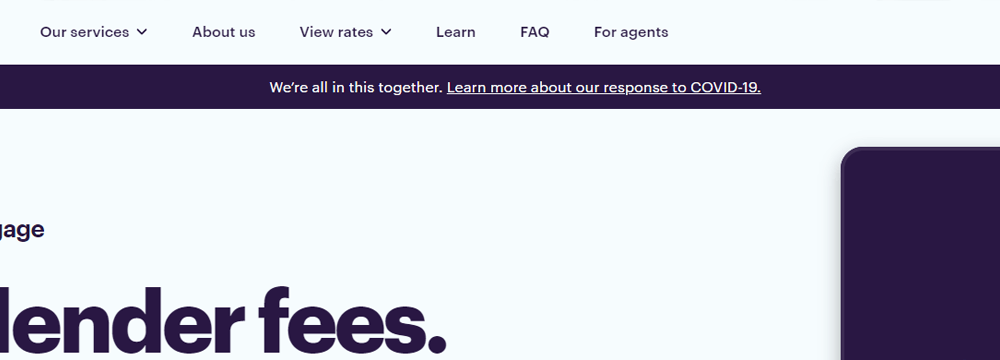
The end goal of course with your mortgage website is to get more leads which will hopefully turn into closed business. The truth though is that the majority of visitors to a landing page or website don’t end up converting. This is where popups and sticky bars come in. Popups and sticky bars are two tools that you can use to elicit an action from your website visitors.
A sticky bar is simply a banner with an offer or alert that stays stuck to the top (or bottom ) of your website. A popup is a window that pops up in the middle of the screen on your website. It can be set to pop up after a certain amount of time has elapsed, or even when a certain action, such as someone mousing over the screen to close your website window is detected.
The key here is not to be annoying, if you don’t plaster these everywhere popups and sticky bars are a huge marketing asset for you.
Check out the below example from Better.com
They are using their sticky bar on their website to alert borrowers to updates and changes in the mortgage industry as a result of the COVID-19 pandemic. This is a great way to spark a prospects interest, and flex a little “industry expert muscle” in the process, further establishing themselves as someone that is a thought leader in the space and increasing the likelihood turning that prospect into a qualified lead.
6. Mortgage Pre-Qualification Tools & Interactive Calculators
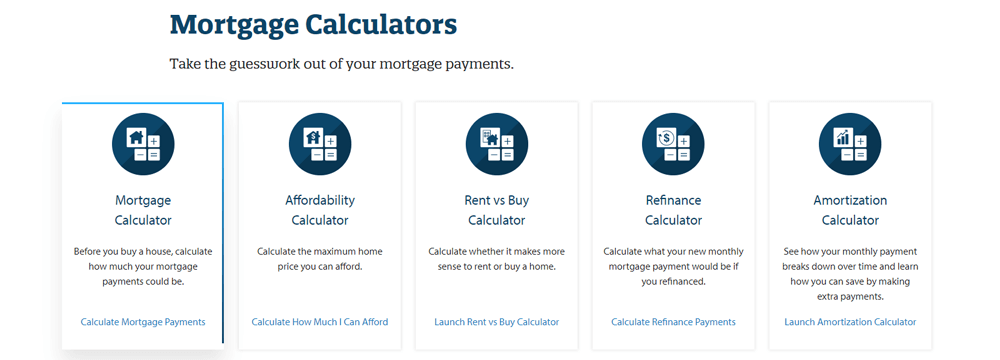
This might seem like a no-brainer, but you would not believe how many mortgage websites are lacking basic lead generation tools such as pre-qualification form processing and interactive loan calculators. Remember this: There are plenty of mortgage brokers in your marketplace. If you can’t make it easy for people to either request info, or get answers to basic questions, they are going to go to another broker’s website.
Your pre-qualification tools and calculators on your website ideally should be an integrated part of your website platform. Having them integrated will help the leads flow into your sales funnel and nurturing campaigns. These forms and calculators are branded to your company and match with the rest of your website. They are easy to embed anywhere you want on your site or a landing page.
Quicken Loans has some great examples of integrated calculators.
They’ve devoted a spot in their website menu to host a variety of calculators that can suit any borrower’s needs. When you choose the calculator you are looking for, you’ll find a clean, easy to use, integrated calculator that gives immediate feedback.
Make Sure You Have The Features Borrowers Are Looking For
When it comes to your website certainly there are an endless number of features you can put on it. Start out with these six mandatory features to ensure that you are attracting people to your brokerage’s website, keeping them engaged and turning them into leads. The more leads you attract, the more clients you will get. This in turn will help you grow your business faster.
Key Takeaways
- Lead Generation Tools
A well-designed mortgage website should include lead generation tools such as online application forms, contact forms, and calculators. These tools allow visitors to easily request more information or start the loan application process, helping to convert website traffic into potential clients.
- Engaging User Experience
To keep visitors engaged, a mortgage website should be easy to navigate and visually appealing. Adding elements like client testimonials, FAQs, and educational content can make the experience more valuable and help clients feel confident in their decision-making process.
- Mobile Optimization and Speed
With more users accessing websites via mobile devices, it’s essential for a mortgage website to be mobile-friendly and fast-loading. A website that is slow or difficult to navigate on mobile can turn potential customers away, so optimizing for mobile use is a key factor in improving conversions.
Commonly Asked Questions
- What lead generation tools should a mortgage website have?
Mortgage websites should have online application forms, contact forms, and calculators to help capture leads and make it easier for potential clients to inquire or start the application process.
- How can mortgage websites improve user engagement?
Mortgage websites can engage visitors by offering valuable content such as client testimonials, FAQs, and educational articles, as well as ensuring the website is easy to navigate and visually appealing.
- Why is mobile optimization important for a mortgage website?
Mobile optimization is crucial because more people access websites through their mobile devices. A website that is not mobile-friendly may frustrate visitors and reduce conversion rates.
- How can mortgage websites boost conversions?
By including lead generation tools, providing a seamless and engaging user experience, and optimizing the site for mobile users, mortgage websites can increase conversion rates and improve client acquisition.


